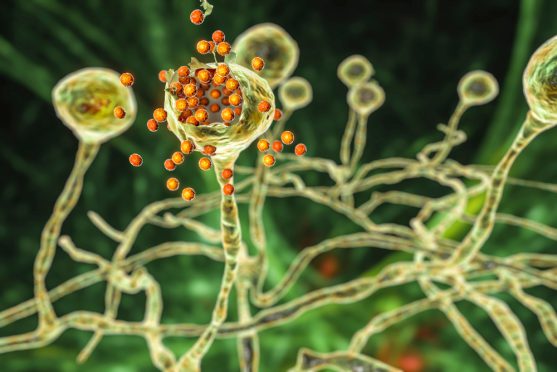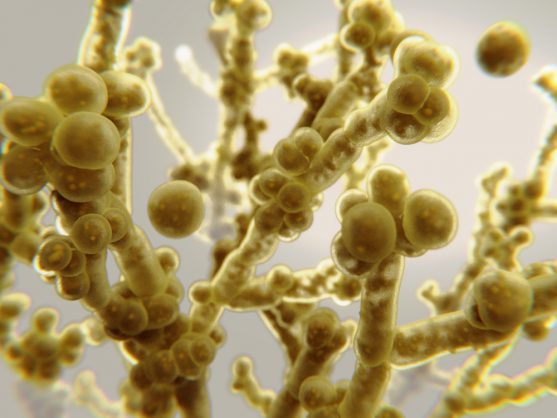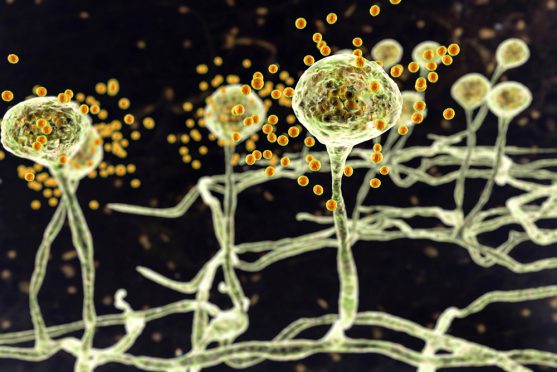Coronavirus, which first appeared in 2019, has become a global disaster over time. The second wave of this disease has caused further damage, with loss of lives and livelihoods.
For some who have managed to recover from the COVID-19 virus, other complications lie in wait. These include the infamous mucormycosis that can have serious consequences and can sometimes be fatal.
COVID-19 survivors are now having to stay vigilant post-recovery, to look for signs of any other fungal infections. Incidence of black, white and yellow fungus among COVID-19 patients and survivors have been found.
In this article, we try to explain these fungi to you in an easy-to-understand manner.
Black Fungus
Black fungus, or mucormycosis, is a rare but dangerous fungal infection which affects the nose, eyes and sometimes brain. It occurs from exposure to fungal spores in the environment. The fungus lives in soil, particularly in decaying matter like leaves, compost piles and rotting wood. The infection causing fungus is called mucormycetes.

In India, some patients who have recovered from COVID-19 have developed this infection in their lungs and nasal passages.
There have also been instances of patients who never suffered from COVID-19 developing this infection in recent times. Studies are being conducted to see if this is due to constant use of face masks without proper hygiene. Repeatedly re-using unwashed face masks could be a contributing factor.
Black fungus can also be developed in the skin, if the infection enters through a cut, scrape, burn or any other type of skin trauma.
This infection can cause death if not treated correctly, and on time.
COVID patients undergoing oxygen therapy in ICU, where humidifiers are used, are more prone to fungal infection because of exposure to moisture.
Also, patients who are recovering from COVID infection and who have uncontrolled diabetes, other comorbidities or a weakened immune system are at high risk of developing this disease. Post COVID onset is usually seen 2 to 3 weeks after COVID treatment.
Mucormycosis is not contagious; it does not spread from person to person, or from animals.
Black fungus has caused some patients to lose their eyesight, while others have suffered from damage in their jaw bone and nasal passage. If untreated, it could be fatal. Chances of recovery depend upon early diagnosis and treatment.
Symptoms of Mucormycosis
The symptoms of mucormycosis depend on the part of the body that it has affected.
If mucormycosis has affected the sinuses or the brain, then the symptoms are likely to be as follows:
- swelling on one side of the face
- facial pain
- headache
- nasal congestion
- black crusts on the nose or the upper lip, which quickly turn into wounds
- fever
- swelling around the eye or the nose
- blurred vision/loss of vision
If mucormycosis has affected the lungs, the symptoms might include:
- fever
- cough
- difficulty breathing
- worsening of respiratory problems associated with COVID-19
- chest pain
How is black fungus treated?
Black fungus requires immediate and aggressive treatment to minimise further tissue damage and to reverse the existing damage.
Treatment usually involves medical and surgical intervention depending upon the severity of the infection and the overall health of the patient.
Treatment might include the following:
- removal of the infected area through surgical procedures
- use of antifungal medicines like amphotericin B (through IV drip) to slow down the spread of infection
- use of antifungal medication like posaconazole and isavuconazole to treat the infection
- medication to control the underlying condition of the patient like diabetes
- discontinuation of any steroid medication that the patient has been taking
- long term antifungal treatment to control the disease
Black fungus is a complicated disease and requires treatment from a team of experts, including surgeons and microbiologists. It is not advisable to attempt self-medication at home if you are facing the above mentioned symptoms.
Early diagnosis and treatment are key to improving outcomes for patients with COVID-19–associated mucormycosis.
White Fungus
White fungus is also called Aspergillus or Candida. Cases of white fungus have also been reported among patients recovering from COVID-19, in some parts of India.

This type of mucormycosis is more common among children and women.
Experts have identified these possible causes of white fungus infections:
- use of unclean oxygen concentrators or oxygen cylinders
- use of tap water, in place of clean water, in humidifiers
- unsupervised and overuse of steroids
Patients of coronavirus are more susceptible to white fungus when compared to the general population. Patients with a history of steroid use or excessive use of antibiotics, patients who suffer from diabetes, lung infections or cancer are also more susceptible to this infection.
The fungus can rapidly damage the cells of organs like eyes, nose, throat, tongue, intestines and liver. This can lead to very serious consequences for the patient.
Many patients do not fully understand the severity of the problem and this could lead to delayed treatment. In such situations, patients who have fully recovered from COVID-19 might still face fatal consequences due to mucormycosis.
Symptoms of White Fungus
The symptoms of white fungus are similar to those of COVID-19. Symptoms include:
- cough
- fever
- breathlessness
- diarrhea
- fall in oxygen levels
- white spots inside the mouth
- lesions on the skin
How is white fungus treated?
Usually, high doses of antifungal drugs are administered to prevent the infection from spreading to different parts of the body.
Yellow Fungus
Yellow fungus, also called mucor septic, is widely considered to have more serious implications than black or white fungus.
Yellow fungus is more commonly found in reptiles like lizards and less commonly in humans. However, in recent times a few cases of yellow fungus have been reported in some parts of the country, with the first case being reported in Ghaziabad, UP.

Possible causes of this virus are unhygienic surroundings, including the presence of faeces around the living area. Additionally, consumption of unclear or rotten foods can also lead to this infection.
Those with a weakened immune system are more susceptible to yellow fungus. Long-term use of steroids and antifungal medications could also be a contributing factor.
Symptoms of Yellow Fungus
- severe fatigue
- loss of appetite
- weight loss
- wounds that do not heal
- formation of pus in the wounds
- sunken eyes
How is yellow fungus treated?
Amphotericin B, a broad spectrum antifungal drug, is being used for this purpose. Apart from this, doctors are using a combination of commonly available medicines to treat yellow fungus.
How can yellow fungus be prevented?
It is possible to reduce your risk of developing yellow fungus by taking these measures.
- Ensure that your surroundings are clean. All waste, including rotting vegetables and left-over food should be disposed of in a safe manner.
- If you are using an oxygen cylinder at home, ensure that you follow the directions thoroughly.
- If you are diabetic, monitor your blood sugar levels regularly to ensure that they are in check.
- If you are on steroids, speak to your doctor about the risks involved. Check if the dosage can be reduced and when the use of steroids can be discontinued.
- Continue to follow all preventive precautions for COVI-19, like frequent washing of hands, sanitizing surroundings, and wearing a face mask.
- Avoid going out unless absolutely necessary.
Prevention of Fungal Infections in Cancer Patients
Fungi are difficult to avoid as they are a natural part of our environment. It is present in the soil, on trees, plants and vegetables. They are also found on many indoor surfaces and even on our skin.
Cancer patients tend to be more susceptible to these infections as their immune system is compromised owing to the cancer itself or due to certain treatments for cancer.
However, there are ways of reducing your risk of developing this infection.
- The first step is to be aware of these infections and their symptoms. Spotting the symptoms early will help you get early treatment and relief.
- Know the symptoms of having low white blood cell count. This can make you more susceptible to infections.
- Maintain clean surroundings. Ensure safe disposal of wastes.
- Practise food safety at all times.
